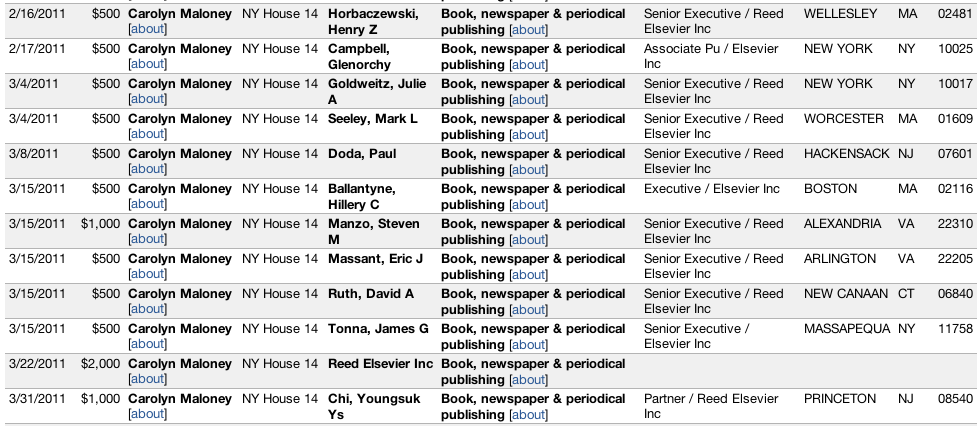Having spent a decade fighting the scientific publishing establishment, the last few weeks have been kind of fun. Elsevier, the Dutch publishing conglomerate that has long served as the poster child for all that is wrong with the industry, has come under withering criticism for pushing legislation that would prevent the US government from making the results of taxpayer funded research available to the public.
Scores of scientists (myself included) have slammed the hypocrisy of the bill. Prominent publishers, fearing a backlash against Elsevier’s overreach, have come out in favor of government public access policies. Even the editors of The Lancet, one of Elsevier’s prized possessions, called the bill a “damaging threat to science“.
But amidst all this richly deserved opprobrium, we must not forget that Elsevier are in a position to behave so poorly because we let them. Publishers control the paywalls that restrict access to the scientific literature. But individual researchers control the fate of their own papers. And the only reason a paywall ever stands between anyone and a paper they want to read is because its authors chose to put it there.
The scientific community could decide tomorrow to eliminate restrictions on access to the research literature. But, because of a complex stew of narrow self-interest, vanity, laziness and tradition, the majority of scientists continue to feed the beast – unwilling to act on their own to change a system they know is wrong.
I love how Kevin Zelnio puts it:
Scientists’ idealism is honorable, and genuinely heartfelt. Few other groups of people really do want the change the world in such a positive, progressive manner. Yet, in a twist of irony, few other groups who prize evidence and free thought systematically follow dogmatic traditions that are directly in conflict with their idealistic world view. Why are some of the smartest people in the country allowing publishing companies to fleece them, their institutions and libraries, the federal government and the american taxpayers of their money?
And last week, mathematicians Tim Gowers and Tyler Neylon launched a new effort to get researchers to exercise their collective power to make scientific publishing better serve their and the public’s interest by organizing a boycott of Elsevier journals which has (at this writing) around 3,000 signatures (including mine).
The boycott isn’t perfect. I wish they hadn’t focused exclusively on Elsevier – they are hardly the only bad actors in the field. And it’s crucial that the focus be on papers. Nobody views turning town invitations to review to be a big sacrifice – and publishers will just find someone else. Same thing with editors. But papers are their lifeblood. Cut off the supply, they will have no choice but to alter their publishing practices. But even as it is written now, if this kind of collective action actually worked, it would have a huge impact. So the question is, will it?
We do have a historical precedent. In late 2000 my postdoctoral mentor Pat Brown, frustrated with the refusal of most publishers to participate in the newly launched PubMed Central, began circulating a letter in which scientists pledged to exclusively publish in, review for and serve as editors of journals that placed their contents in PMC with no more than a 6 month delay. The letter quickly received a list of prominent signatures, including many Nobel Prize winners, leading us to go public with a new site to gather public support for building an “online public library of science” (from whence the name PLoS derives).
Within a year 30,o00 people had signed the letter. But, when push came to shove, few followed through on their pledge. Publishers did not respond to the call from their constituency, leaving only a handful of journals in PMC and the nascent open access options from BioMed Central to choose from. Pat and I and a handful of the strongest OA supporters kept our promise, but most did not.
It was very disappointing. We had the opportunity in front of us to change things for the better, and we let it slip through our fingers. Pat and I spent much of the next year attempting to cajole, guilt and embarrass our colleagues into sending their papers to OA or PMC journals. But it wasn’t working. We always got some variant on the same refrain:
I didn’t build the system, and I’d change it if I could, but if {I/my postdoc/my graduate student} want to get a {job/grant/tenure/postdoc} our papers needs to be published in {insert name of high-profile subscription journal}
Nevermind that this widely and deeply held belief – that success in science requires publishing in high impact journals – is incorrect. When push came to shove, most signers of the open letter abandoned this effort to fix a broken system, and continued sending their papers to non-OA, non-PMC journals.
But there are very good reasons to believe that things are different now, and that we can succeed with a new organized effort to deny publishers that are not serving our interests the papers on which they depend. The most obvious and important difference is that the landscape of open access publishing has changed dramatically since the original PLoS boycott. Indeed it was its failure – or more precisely the excuses colleagues gave us about why they weren’t participating – that led Pat, Harold Varmus and I to refocus PLoS as a publisher.
PLoS had many goals, but chief among them was the desire to give authors open access options where they would be confortable sending all of their papers. While PLoS Biology and PLoS Medicine haven’t succeeded in displacing the glamour mags Science, Nature, The New England Journal and The Lancet, they provide viable high impact open access alternatives, our community journals have become very prominent in the communities they represent, and PLoS ONE is now the biggest biomedical research journal in the world. BioMed Central is also thriving, and a wide range of new open access publishers and journals have come online in the past few years. And eLife, a joint open access project from HHMI, Wellcome Trust and the Max Planck Society will launch later this year.
Thus, people joining in the new boycott have no excuses not to follow through. There are plenty of viable OA options and it is simply unacceptable for any scientist who decries Elsevier’s actions and believes that the subscription based model is no longer serving science to send a single additional paper to journals that do not provide full OA to every paper they publish. So, come on people! If we do this now, paywalls will crumble, and we all be better off. So, come on! Let’s do it!
[UPDATE: I changed the original title of this post from “You are Elsevier: Publisher boycotts then and now” to more accurately reflect my point].


 I'm a biologist at UC Berkeley and an Investigator of the Howard Hughes Medical Institute. I work primarily on flies, and my research encompases evolution, development, genetics, genomics, chemical ecology and behavior. I am a strong proponent of open science, and a co-founder of the
I'm a biologist at UC Berkeley and an Investigator of the Howard Hughes Medical Institute. I work primarily on flies, and my research encompases evolution, development, genetics, genomics, chemical ecology and behavior. I am a strong proponent of open science, and a co-founder of the 